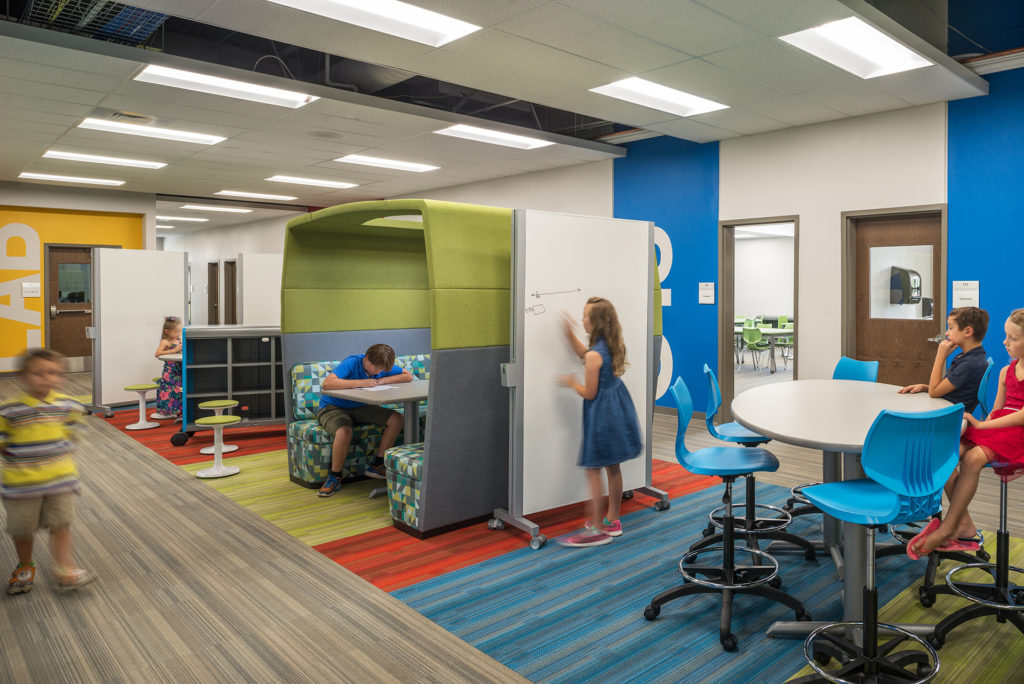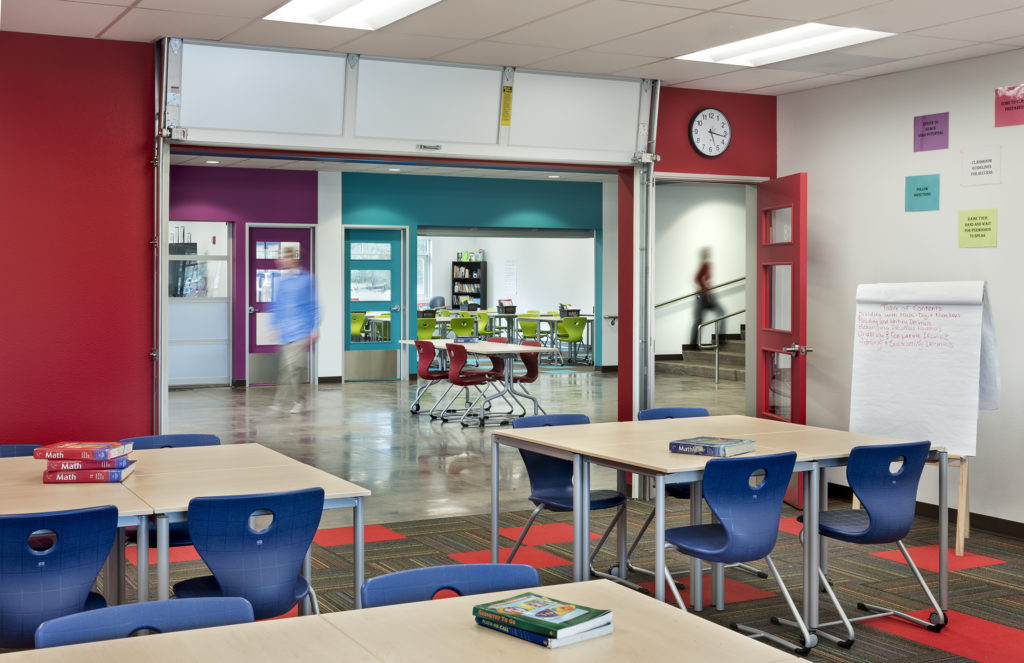Student and staff safety and well-being stand to benefit when learning facilities take steps to increase ventilation, decontaminate the environment, and design more flexible spaces.
Ongoing concerns for our classroom environments have facilities’ health and safety measures being scrutinized. Many school districts have made immediate emergency upgrades in response to the COVID-19 pandemic, but there’s room — and financing — to further improve air quality in schools that will increase both physical and mental benefits to students and staff.
Improving indoor air quality (IAQ) in learning facilities has both physical and mental benefits. Increased ventilation can decrease upper respiratory infection rates by more than 10%, bump test scores by 11 points on average, and increase recognition rates by 15%.

The federal government has distributed $190 billion of elementary and secondary school emergency relief funding (ESSER) to K-12 schools. This huge investment can be applied to various coronavirus mitigation efforts, including, specifically addressing the building systems that can affect indoor air quality. To move forward, school leadership should take into consideration both assessing and upgrading existing systems, as well as the type of facilities planned for the future combining needed upgrades with future-looking enhancements.
While new funding is available now, schools will need to budget accordingly, making it crucial that they discern which upgrades and equipment will be most effective for their facility.
Defining a Healthy School
Schools are among the facility types most impacted by the pandemic. While remote or hybrid learning is occurring across the country, there is research that indicates a need for students to return to the classroom. The U.S. Department of Education points to data collected before and during the pandemic showing that in-person learning results in improved academic outcomes, greater levels of student engagement, higher rates of attendance, and better social and emotional well-being. In-person attendance also gives students access to critical school services and extracurricular activities.
This data points to why, in addition to the hasty countermeasures enacted during the pandemic, we must also implement longer-term facility designs that promote health and well-being. It’s worth noting that the average school building in the U.S. is 50 years old — this underscores the need for air quality upgrades and meeting modern standards, regardless of the global health crisis we are currently facing.

To begin the process for improving air quality, it’s helpful to define what it means to be a healthy school. Some of the main attributes include:
- Flexibility and adaptability built into the facility’s layout. This may be achieved with mobile furniture that allows for various classroom layouts. A flexible and adaptable classroom can also respond to a greater range of teaching or learning styles.
- Safety and security checkpoints with a primary monitored entry point and generously sized vestibules and lobbies. Cutting down on congestion or “pinch points” allows for safe distancing.
- Building materials and furniture that promote cleanliness, along with choosing antimicrobial surfaces. The materials used for furniture and other items should not off-gas harmful contaminants.
- Source-pollutant control of materials and cleaning program management and products. Materials being used to clean and sanitize surfaces should not add harmful chemicals to the air.
- Multiple connections to the outdoors, including learning patios, outdoor classrooms, and other spaces that lead to additional learning opportunities.
- Use of natural daylighting, views, and greenery that are reminiscent of nature, supporting both health and behavioral benefits.
- Indoor air quality driven by proper filtration and ventilation with outdoor air.

Assessing and Moving Forward
With a better grasp of what defines a healthy school, we’re able to perform assessments that will help determine what aspects of the school need to be modified for improved air quality purposes. These assessments include:
- Monitoring indoor air quality to collect data on temperature, humidity, carbon dioxide, particulates and total volatile organic compounds.
- Observing the age, condition and configuration of the existing HVAC systems.
- Identify potential sources of airborne contaminants. This could include any building or furniture materials that are off-gassing harmful compounds.
- Evaluating outdoor air delivery and control.
- Assessing exhaust air systems for effective capture and removal of contaminants from localized indoor sources.
- Identifying filter type and arrangement for outdoor air and recirculated air. While outdoor air is typically an improvement on indoor air quality, the surrounding environment around a learning facility may have pollutants that need to be filtered out or treated (think, for example, of schools in regions that experience wildfires).
- Estimating remaining HVAC system service life. It may be more cost-effective and healthier to replace an aging system than to make incremental repairs.
Once you determine the areas of repair or upgrade, stakeholders should categorize and prioritize the identified deficiencies for the most cost-effective and high-performing solutions. Which parts of a school should be updated and how to best tackle those needs will require a range of input and expertise. Insight into the community, experienced designers, and air quality-conscious engineers are necessary to successfully reimagining safe and effective learning environments.

Schools can gather recommendations for potential upgrades to HVAC and control systems, particularly those relating to outdoor air control and monitoring, and for operational and maintenance adjustments.
It’s also important to consider more advanced indoor air quality measures, including displacement ventilation, enhanced filtration, and advanced control strategies based on real-time measurements of indoor and outdoor air quality. Making upgrades to a facility is essential, but ongoing air quality monitoring into the future is needed to ensure all systems are working properly.
Any and all steps taken should involve experts who can help connect schools with resources for compelling, evidence-based needs and investments. While new funding is available now, schools will need to budget accordingly, making it crucial that they discern which upgrades and equipment will be most effective for their facility.
The potential to improve the health and safety of classrooms, while also improving the effectiveness of the learning environment, comes to the enormous benefit of society at large. Holistic designs that take a flexible approach to the classroom will guide the future of learning facilities. These schools will not only end up safer, but they will offer the opportunity to explore a wide range of learning styles and generally expand the range of experiences that teachers may provide.

